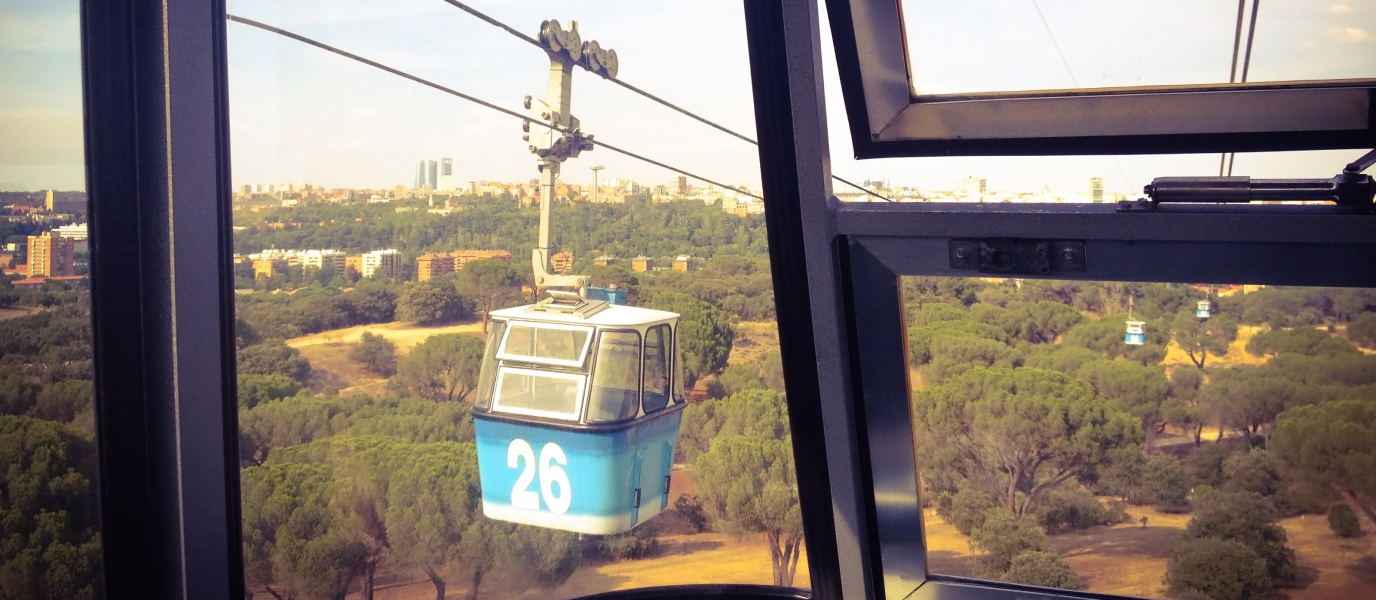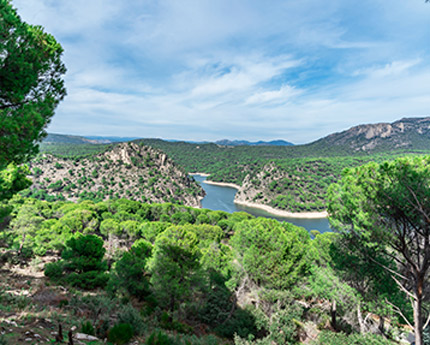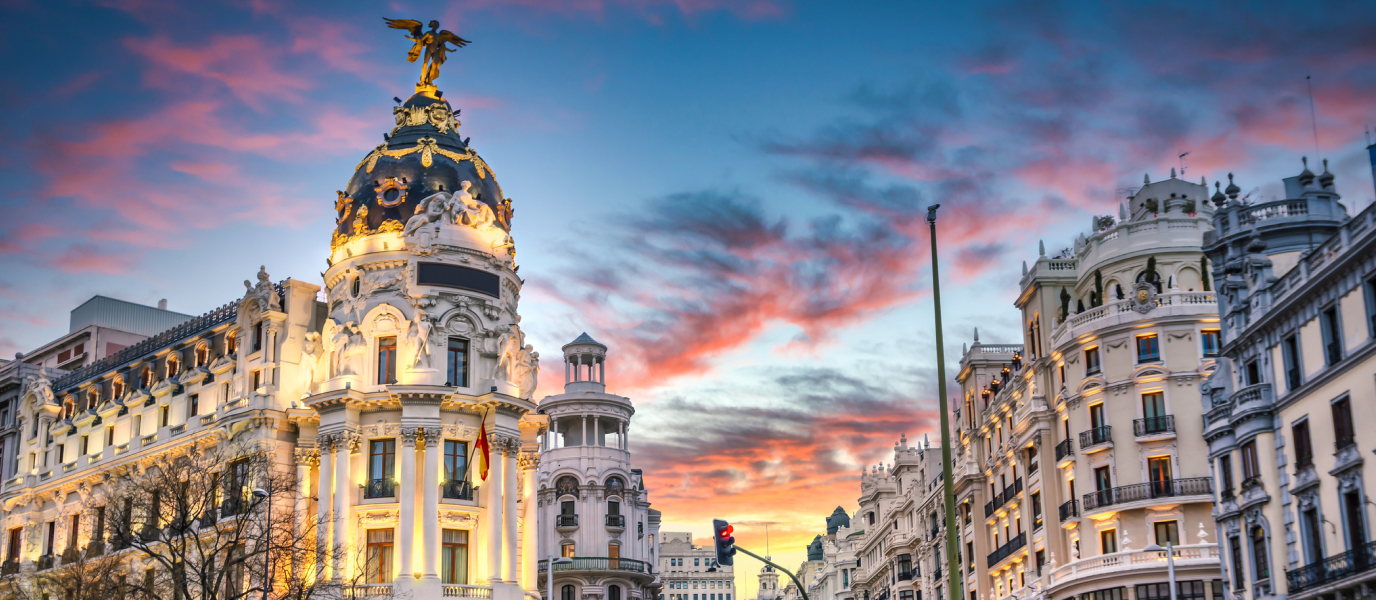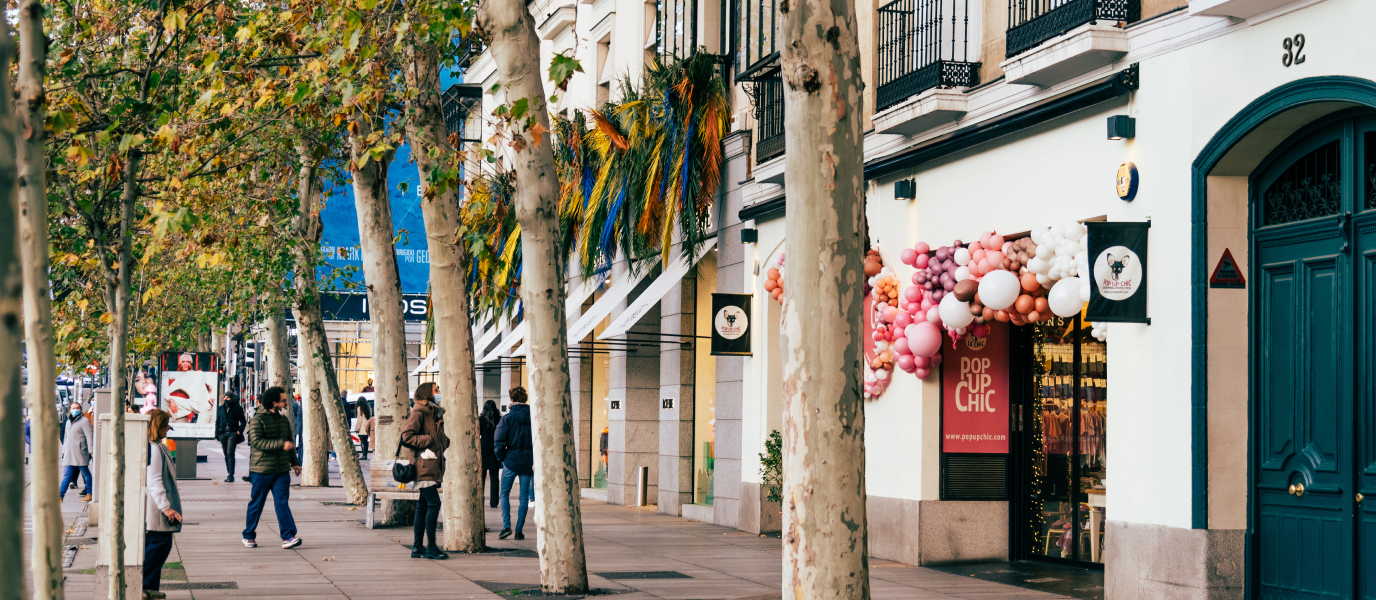On 20 June 1969, one month before Neil Armstrong took his first steps on the Moon, the residents of Madrid came a little closer to reaching their beloved blue skies. That was the day that the cable car opened, a clever invention that gives travellers a bird’s eye view of Madrid as they fly over the city that is now remembered fondly by anyone who grew up as a child here. In fact, the idea had been a long time coming. In the nineteenth century, architect Antonio Palacios—responsible for the iconic temple entrance to Gran Vía metro station—proposed creating a funicular that would connect Príncipe Pío hill to the Casa del Campo. The project wasn’t actually realised until the twilight of the Franco dictatorship but ever since then its little cabins have soared to and fro along the 2,457 m route between the Estación del Paseo del Pintor Rosales (by the entrance to the Parque del Oeste) and the Casa de Campo. After five decades of being run by a private company, the cable car has been directly managed by Madrid City Council since 2018.
The cable car in numbers
Madrid cable car has 80 six-seater cabins that travel at a modest speed of 3.5 metres/sec. They take 11 minutes to travel a distance of almost 2.5 km between the two stations. If you travel towards Casa de Campo you’ll notice a slight ascent because this station is 651 m above sea level, 24 m higher than Parque del Oeste station. The maximum altitude reached along the route is 40 m. The cable car has the capacity to transport up to 1,200 travellers per hour and since its launch it is estimated to have been used by around eight million people (around 180,000 per year) on over five million journeys.
From Madrid to the skies by cable car: the route
The easiest route chosen by most people using the cable car involves setting off from Estación del Paseo del Pintor Rosales (just five minutes from the Templo de Debod) to spend the day at the Casa del Campo. It’s a fun, traffic-free way to reach the green lungs of the city.
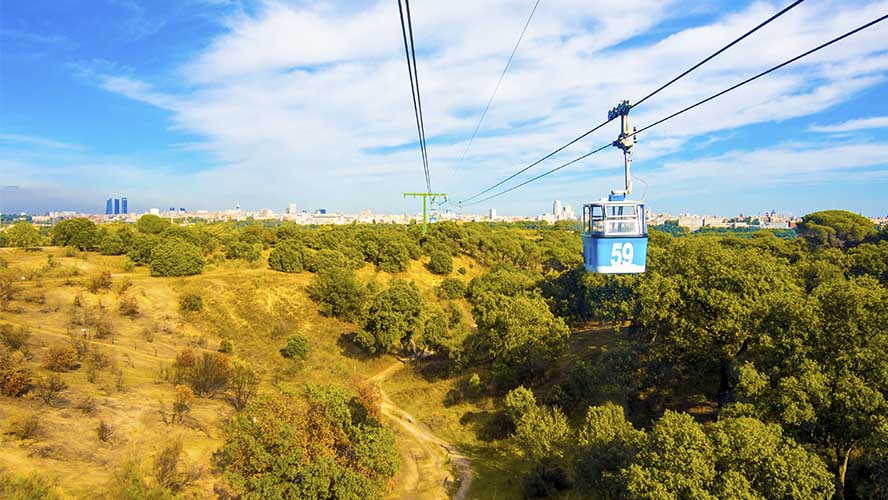
It’s exciting to feel your cabin climbing higher and higher and watch the city spreading out beneath you before your very eyes. An added bonus is the recorded commentary that provides you with information about each place as you travel over it. Soon you’ll see the Parque del Oeste beneath your feet and fly over the Estación de Príncipe Pío, one of the most important stations in Madrid. It’s easy to spot the legendary Madrid skyline all around you, including sights such as the Plaza de España, the Paseo de la Castellana skyscrapers, the Pirulí, the Royal Palace and the Almudena cathedral.
You’ll also fly fairly close to several buildings which will make you appreciate the reason why several neighbours were afraid of losing their privacy and made complaints that delayed the official opening by a month in 1969. Finally, you’ll reach the Ermita de San Antonio de la Florida, which is famous for its Goya frescoes, and the Manzanares river. As you cross the river, the huge green expanse of Casa de Campo stretches out before you. This immense public park covers 1,722 hectares and is the largest in Madrid; its origins can be traced back to the sixteenth century when King Philip II bought the estate to join the nearby Royal Palace with the El Pardo hunting lodge. Your final destination, Estación de la Casa de Campo, is in the heart of the park near the Cerro de Garabitas hill, the site of several battles during the Spanish Civil War.
Ideas for visiting Casa de Campo
Next to the station, in what is known as the Plaza de los Pasos Perdidos, there is a restaurant/café where you can take a quick break before heading into the Casa de Campo. The park is a vast natural space that is perfect for walking and doing sports. One of its biggest attractions is its artificial lake, which has recently been refurbished; it has a jetty where you can hire boats, dugout canoes and canoes.
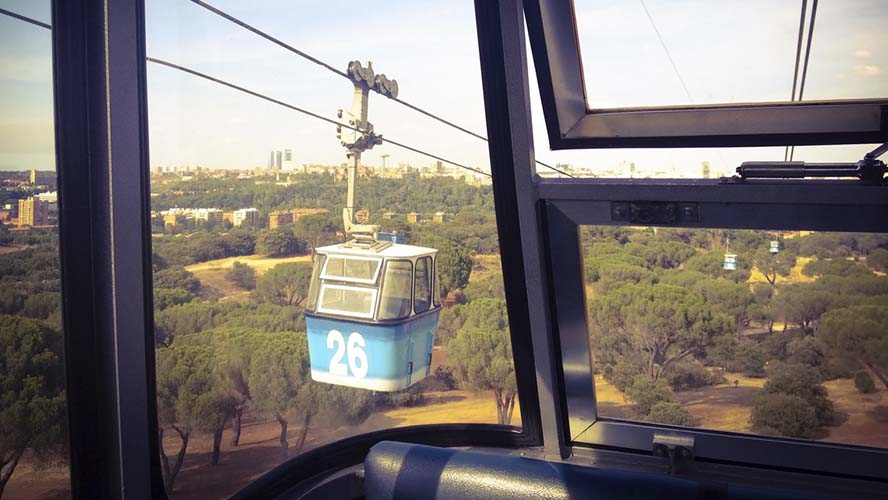
However, the classic cable car itinerary involves spending the day in of the two large leisure centres in the Casa de Campo: the seasoned Parque de Atracciones, which opened in 1969, is still fresh-faced and has 48 rides to suit everyone; and the Zoo Aquarium, a fascinating place that is home to over 6,000 animals belonging to over 500 species from the five continents.




































































